Notes
Status Update: Silicon Valley in the Mirror
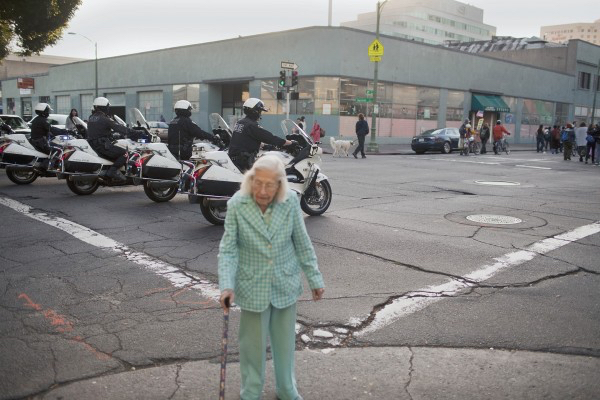
Oakland, 2011. From the series “Occupy Bay Area.” Lily Chen.
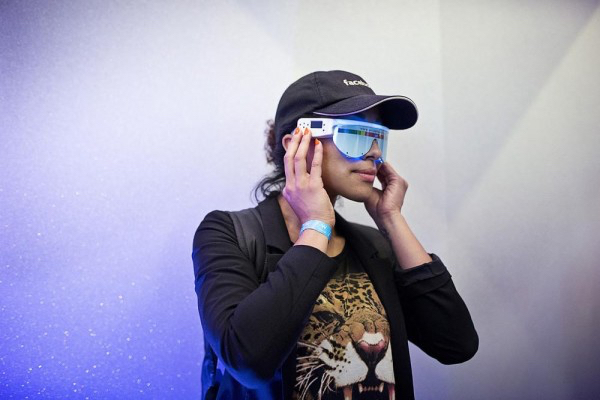
From the series “Wild West Tech.” Laura Morton.
If you’re familiar with this site, you know we hardly do exhibition or book reviews. We analyze news photos. Given the social and cultural significance of Silicon Valley, however, we decided to look at the recent “Status Update” exhibition in San Francisco — at least, in our own particular way.
It’s a sign of the importance of the area that the “Status Update” show at SOMArts, produced by Catchlight and curated by Pete Brook and Rian Dundon, garnered a good bit of media attention (Wired; TIME Lightbox; California Sunday Magazine) even if it only lasted a few days. (Full disclosure, Brook is a contributor to this site.)
It’s important to add that the show was just partly and inferentially about Silicon Valley, and the tension between tech and the rest of the Bay Area. More accurately, the work by the 14 artists was intended as a broad sweep of the region’s diversity, and to raise the question: how does one depict the fractal nature of San Francisco and neighboring communities?
Surveying the show, it’s too rich and multitudinous to reduce the cultures and the social currents into rich or poor, digital or analog, slick or well-worn. Still, in juxtaposing communities, physical and otherwise (in some cases, pridefully, in other cases, desperately) because two of the artists dealt directly and ironically with the tech boom, one could look at the show as “catching the light” (or the shadow) Silicon Valley casts over the entire region.
Grappling with how to wrap my head around that, a solution presented itself at a panel during the show. Sandy Close, Executive Director of the New America Media news service described the state in terms of not just moral, but demographically and electorally-weighted forces. To her, the show represented the obvious power of Silicon Valley, with all its connections and prodigious influence over local and state government, in tension with the rising power of ethnic communities. What she saw in the imagery was the strength of black, brown and Asian citizens, if not to influence to the same degree, then to persevere while growing that power through organizing and strength of numbers.
Here then was a way to understand the show, the Valley and the Bay Area beyond the terms of power, assets and cultural capital. Instead, the show afforded the lens to consider the tech boom in the face of the character, diversity but, above all, the perseverance of the communities, cultures and subcultures of the region.
Of course, as Dundon told TIME, “There are no binary issues…. Experiences are not simply good or bad. They happen on a spectrum.” And yes, that’s true, but binaries can be helpful at times in terms of organizing principles.
What follows is our reorganization of the (mostly) published press images into two categories, “unequal states and the tech quandary,” and “the power of perseverance,” with thoughts on each image.
The place to start, though, is at the top of the post and Lily Chen’s “Occupy” photo. The way crisis (in our media culture, anyway) is synonymous with drama, we see the agents of the state off to quell the dispossessed while the elderly woman at the crossing point, disrupting the symmetry, presents as an afterthought. That’s in contrast to Laura Morton’s VR girl with the Facebook hat, where stimulus, electronic gee whiz, and being-everywhere-but-nowhere is what it’s all about. (That’s in addition to the ageist obsession with youth culture.)
Unequal states and the tech quandry
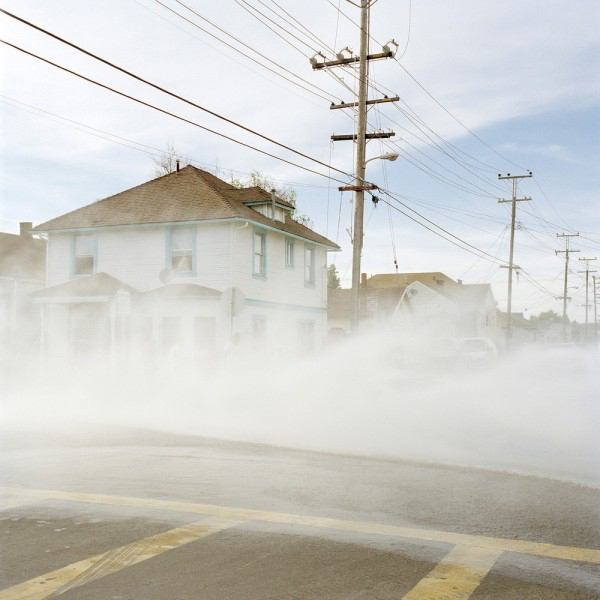 Chanslor and 4th Street. Richmond, 2009. From the series, There Is Nothing Beautiful Around Here. Paccarik Orue.
Chanslor and 4th Street. Richmond, 2009. From the series, There Is Nothing Beautiful Around Here. Paccarik Orue.
Paccarik’s water spray in Richmond is a masterstroke — in showcasing the ambiguity of the show in tackling the entire Bay Area at once. At the same time, the photo speaks to the obscurity of the region’s more modest communities in the high glitz era. Instead of seeking essence, he posits a murkiness, if not a miasma.
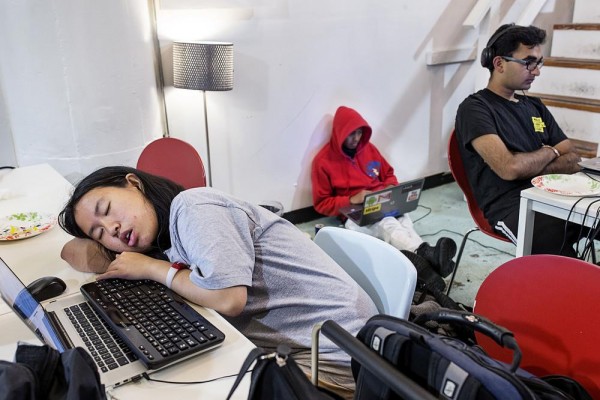
A participant in a hackathon organized by the company Shirts.io takes a nap at her computer in the middle of the night at Citizen Space in San Francisco, Calif., on Saturday, August 16, 2014. From the series, “Wild West Tech.” Laura Morton.
Beyond the havoc the tech world wreaks on biorhythms, the photo of these tech world wannabes speaks to chasing unicorns, and the fact that all this progress is leaving everyone exhausted.
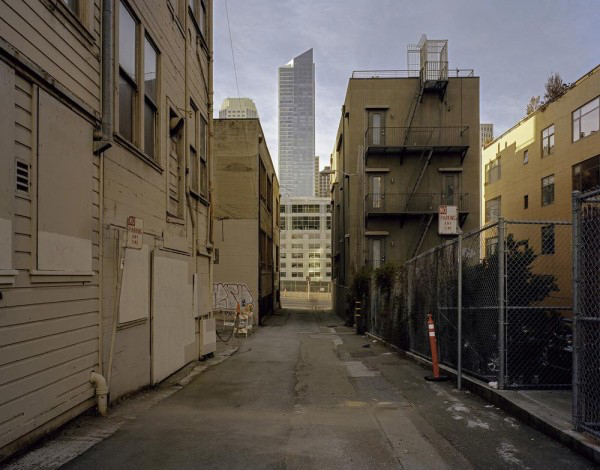 Millennium Tower from Zeno Alley, 2012. From the series “SoMa Now.” Janet Delaney.
Millennium Tower from Zeno Alley, 2012. From the series “SoMa Now.” Janet Delaney.
Yes, the city and the tech boom is most commonly identified by towers and enormous disparities in scale. In Delaney’s portraits however, the byproduct is anonymity and haunting vacuums.
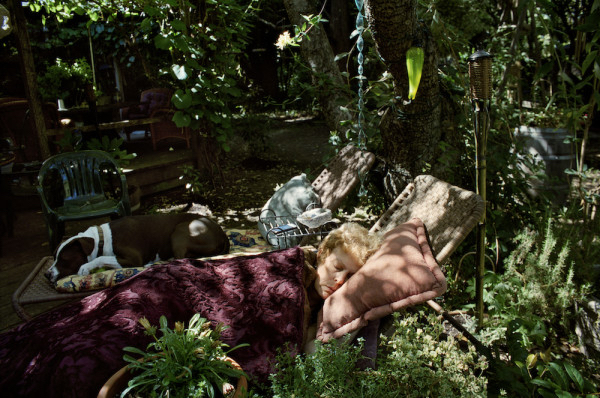 Untitled (Sonoma, Calif. 2010-2015). From the series ‘West County’. Talia Herman.
Untitled (Sonoma, Calif. 2010-2015). From the series ‘West County’. Talia Herman.
I’m not sure any of the write-ups of the show got Talia Herman’s photos right. To me, her images suggest how the pot culture, and by association, the era of peace and love in the Bay Area had its day. Because there is hardly any imagery in the show capturing the (actually booming) consciousness and human evolution movement, however, it feels like the wealth and the materialism of the tech boom has obscured that, as well. Perhaps the inference here is that the rest of us, if we’re not plugging or cashing in, are missing out.
You’re picking up the pattern, though, right? That the symptom on the flip side of the boom is narcolepsy.
 Joymara Coleman, a 24-year-old Cal State East Bay student, displays two of the psychotropic medications she was prescribed while in foster care. She no longer takes them. Dai Sugano / Bay Area News Group.
Joymara Coleman, a 24-year-old Cal State East Bay student, displays two of the psychotropic medications she was prescribed while in foster care. She no longer takes them. Dai Sugano / Bay Area News Group.
This image, from an extended exposé of the foster care system by the Mercury News, documents how our culture medicates its problems. But who talks about treatment? And while we glorify tech, who ever talks about Big Pharma?
The Power of Perseverance
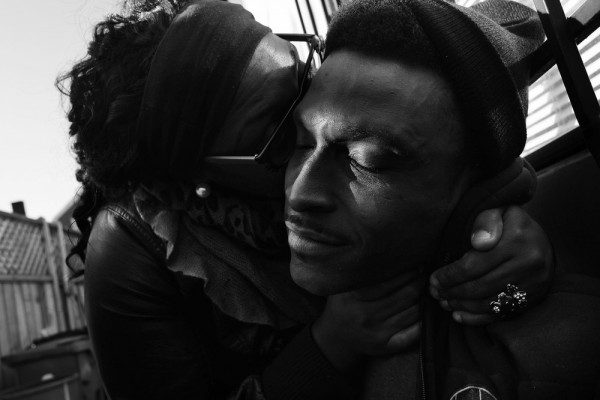 From an ongoing project following Shannon Fulcher in Oakland. Oakland. Calif., 2013. Sam Wolson.
From an ongoing project following Shannon Fulcher in Oakland. Oakland. Calif., 2013. Sam Wolson.
As compared to the ghost town or the somnambulism of the gold rush, Wolson’s photo is stunningly intimate. And not to minimize adversity, but where love emanates is from the challenge and the continuity of surviving day-by-day.
In comparative terms, however, where tech gets into a quandary — at least as far as the show goes — is through emotional impoverishment.
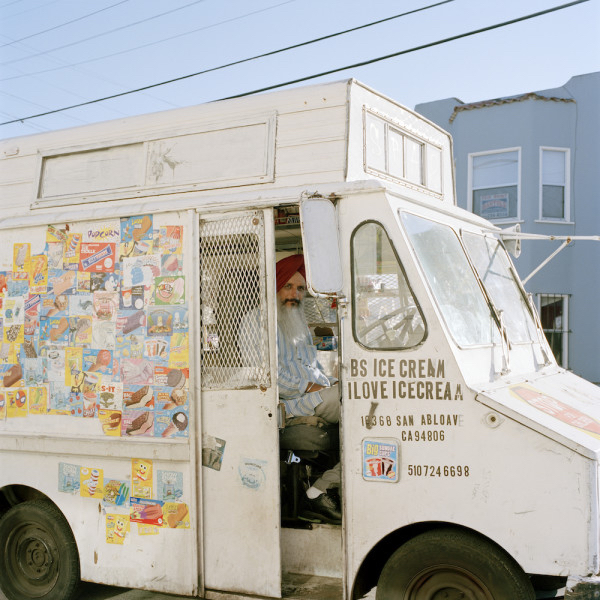 Paccarik Orue. BS Ice Cream, I Love Ice Cream, 2010. From the series ‘There is Nothing Beautiful Around Here.’
Paccarik Orue. BS Ice Cream, I Love Ice Cream, 2010. From the series ‘There is Nothing Beautiful Around Here.’
So much for virtual reality and commodification. In Orue’s photo, a sense of place (and respectful commerce, too) comes from identity and ritual, faith and ethnicity, as well as all the old flavors of the neighborhood.
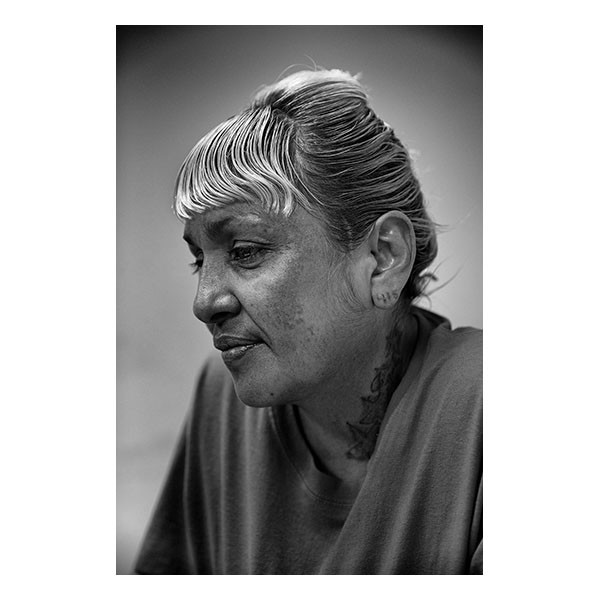 Anna Louisa Urbina. San Francisco County Jail 2. From the series, “Take a Picture, Tell a Story,” San Francisco, Calif. Robert Gumpert.
Anna Louisa Urbina. San Francisco County Jail 2. From the series, “Take a Picture, Tell a Story,” San Francisco, Calif. Robert Gumpert.
In Robert Gumpert’s exchanges with prisoners (trading photos for stories), these individuals are stunningly awake. If there is a knee-jerk tendency in our society to equate prisoners with poor character, in this show, Gumpert’s sensitive portraits equate incarceration more closely with the fallout of hyper-capitalism.
Portrait of Vincent “Snake man” Seymour. From the series “OG Told Me,” Oakland, Calif. Pendarvis Harshaw.
Forget Facebook. That’s a personal profile.
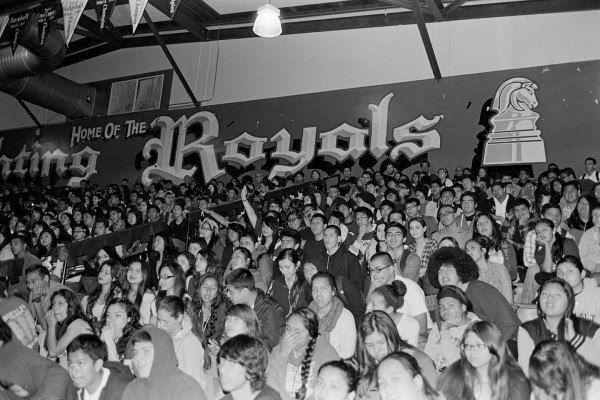 Students crowd the bleachers during an academic assembly at W.C. Overfelt High School in East San Jose, Calif., March 2015. From the series, Common Core in Silicon Valley. Rian Dundon.
Students crowd the bleachers during an academic assembly at W.C. Overfelt High School in East San Jose, Calif., March 2015. From the series, Common Core in Silicon Valley. Rian Dundon.
If there is one photo in the show that is literally in the shadow of “The Valley,” this is it. But that doesn’t mean you can’t be royal.
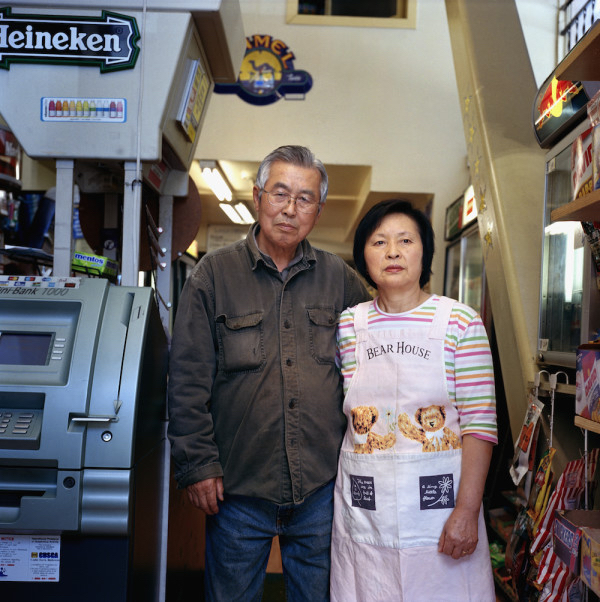 Susie and Jung Ku, San Francisco, Calif, 2011. From the series ‘Faces Of Foreclosure’. Susie and Jung Ku inside the corner convenience store they’ve operated for two decades in San Francisco’s financial district. Joe Rodriguez.
Susie and Jung Ku, San Francisco, Calif, 2011. From the series ‘Faces Of Foreclosure’. Susie and Jung Ku inside the corner convenience store they’ve operated for two decades in San Francisco’s financial district. Joe Rodriguez.
In the panel I reference above, Sandy Close referred specifically to this photo. “We’ll probably have to work for the rest of our lives,” says Susie, the couple severely hurt by mortgage crisis. If what you see in this photo is anguish, however, the stronger quality is grit.
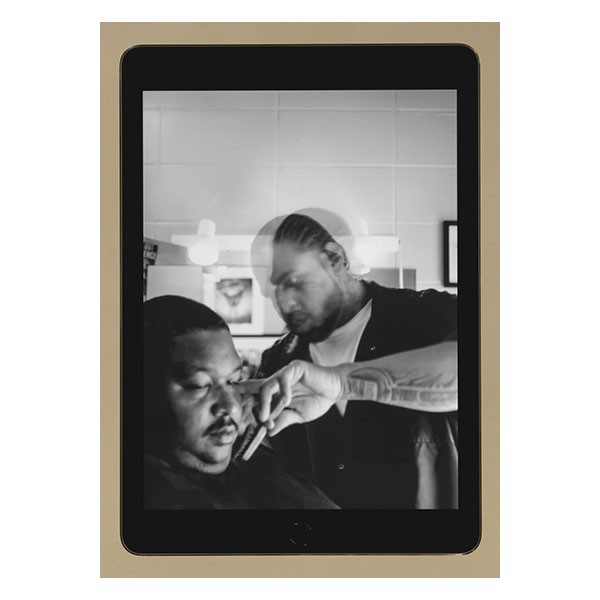 Still from the GIF animation series, “Tapered Throne.” Brandon Tauszik.
Still from the GIF animation series, “Tapered Throne.” Brandon Tauszik.
If Silicon Valley is about what’s automated, instantaneousness and sensational, Tauszik’s almost meditative GIFs made in Oakland’s black barbershops restore the value of slow, respect for the old way and a place where you’re always home.
If you’re interested, you can purchase the book of the show from Catchlight.
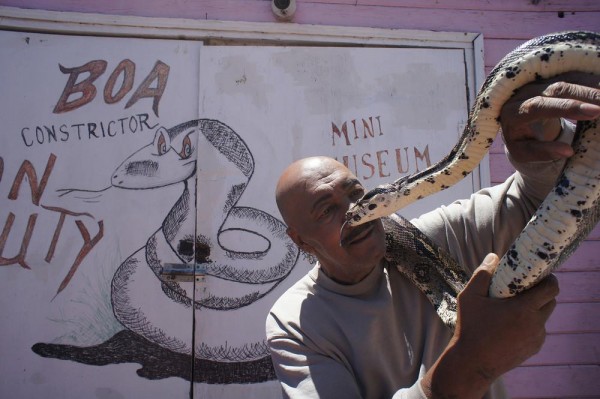
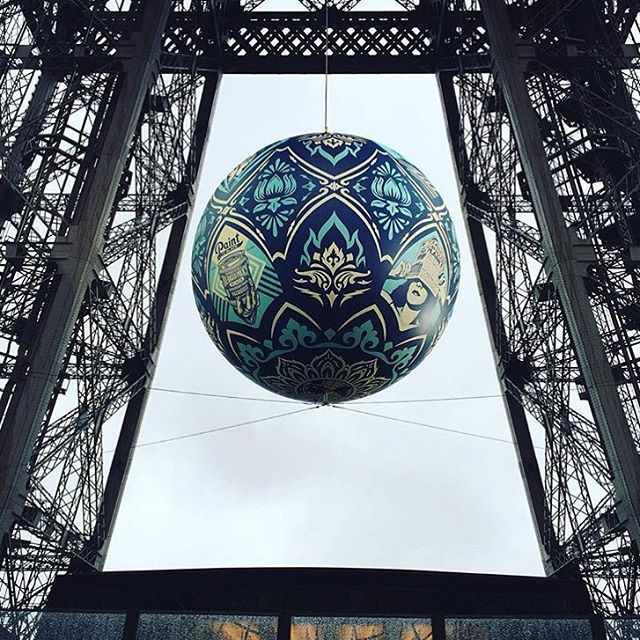

Reactions
Comments Powered by Disqus